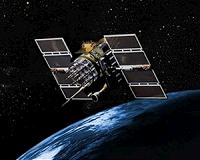 |
Washington (AFP) Nov 30, 2010 American firm SpaceX readied Tuesday the first demonstration launch of its Falcon 9 rocket to low Earth orbit for NASA's Commercial Orbital Transportation Services program next week. Dubbed COTS 1, the December 7 launch will also mark the first time a private firm attempts to have a spacecraft -- SpaceX's Dragon capsule -- re-enter Earth's atmosphere from orbit, a key step in developing commercial launchers to put people into space. It will be the first of three demonstration launches for Falcon 9, which was successfully launched in June. The flights aim to evaluate the launcher and the spacecraft's capabilities and structural integrity at various stages of the launch, flight and water landing in the Pacific Ocean. Last week, the Federal Aviation Administration issued a one-year license to SpaceX for the Dragon spacecraft to reenter Earth's atmosphere, the first of its kind ever granted to a commercial firm. The US space agency NASA signed a 1.6-billion-dollar contract with SpaceX in December 2008 under the COTS program to provide twelve spacecraft with cargo capacity of at least 20 tonnes to resupply the International Space Station (ISS) through 2016. NASA has also signed a contract of 1.9 billion dollars with Orbital Space Corporation for eight launches of its Taurus II rocket starting in 2011. The Falcon 9 -- as tall as an 18-story building -- and the Dragon spacecraft will launch from Cape Canaveral, Florida next Tuesday, with a window extending from 9:03 am (1403 GMT) to 12:22 pm (1722 GMT). If necessary, there will be other launch opportunities on December 8 and 9. President Barack Obama hopes the private sector will help fill the gap that will open when the space shuttle fleet is retired next year, and before a new generation of spacecraft is developed. The three US shuttles -- Discovery, Atlantis and Endeavour -- will become museum pieces after a final shuttle mission to the space station in late February. Obama has proposed spending six billion dollars over five years to help the private sector develop reliable and affordable launchers to transport cargo and US astronauts to the International Space Station. During the transition period, the United States will depend on Russian Soyuz rockets for access to the ISS.
Share This Article With Planet Earth
Related Links Launch Pad at Space-Travel.com
 GPS Satellite Achieves 20 Years On-Orbit
GPS Satellite Achieves 20 Years On-OrbitLos Angeles AFB CA (SPX) Dec 02, 2010 The Global Positioning System (GPS) constellation is the most robust and capable system in the history of space. Space Vehicle Number (SVN) 23 is a testament to how the Air Force continues to meet and exceed its operational requirements with GPS. GPS Block IIA-10 (SVN-23), built by Boeing (formerly Rockwell Corporation), was launched on 26 November 1990 and set healthy to navigation and ti ... read more |
|
| The content herein, unless otherwise known to be public domain, are Copyright 1995-2010 - SpaceDaily. AFP and UPI Wire Stories are copyright Agence France-Presse and United Press International. ESA Portal Reports are copyright European Space Agency. All NASA sourced material is public domain. Additional copyrights may apply in whole or part to other bona fide parties. Advertising does not imply endorsement,agreement or approval of any opinions, statements or information provided by SpaceDaily on any Web page published or hosted by SpaceDaily. Privacy Statement |